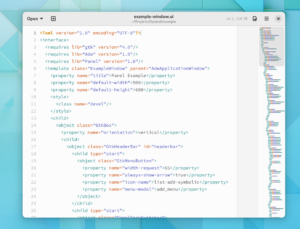HarfBuzz 4.0 was recently released and it gained the ability to draw shapes using hb_draw(). Recently Behdad updated Glyphy to use that new HarfBuzz API which allows us to draw fonts on the GPU without involving FreeType.
I created a branch and along with Matthias we taught GTK’s OpenGL renderer to use Glyphy to store size-independent descriptions of glyphs in GL texture atlases which are drawn with shaders. All the magic really comes from Glyphy, so this was largely an integration project.
Contrast this with how things worked previously, which is to render the glyph for a particular size and x/y shift on the CPU and upload that to a texture atlas. The glyph is then drawn by using the coloring shader to apply color while copying into place. This has all sorts of drawbacks like pixel alignment restrictions and needing a copy of every glyph at every size and shift you need to render in the frame in a texture atlas (which can be reused across frames). Just as an example, if you wanted to animate the size of some text, you’d have a pretty expensive operation every frame and still run into perceived jitter as you align to pixel boundaries each frame.
With Glyphy, we have a single version of the glyph for any size in the texture atlas, stored as encoded arc lists generated from SDF information (as opposed to uploading SDF information to the texture as some other implementations have done). This results in incredibly crisp rendering at any scale or offset (where as other implementations using SDF information in textures tend to create artifacts).
After just a few days of tinkering with it, it seems good enough to actually render Text Editor.
There is certainly more work to be done before this type of advancement can be enabled by default, but it was a fun prototype to be sure.
